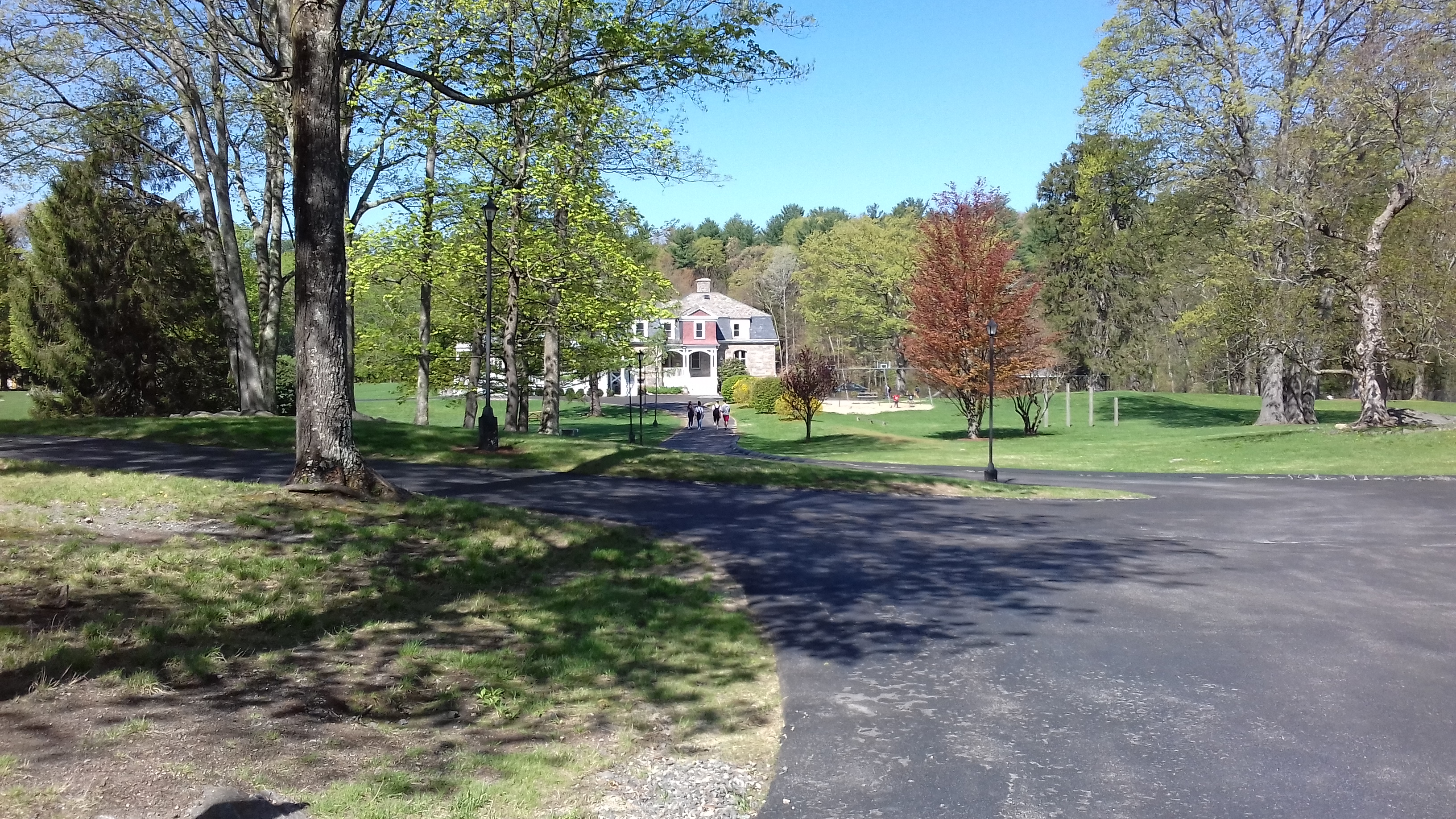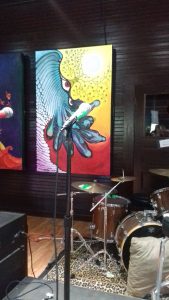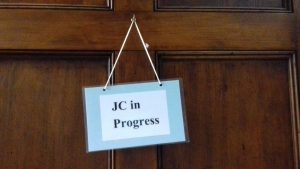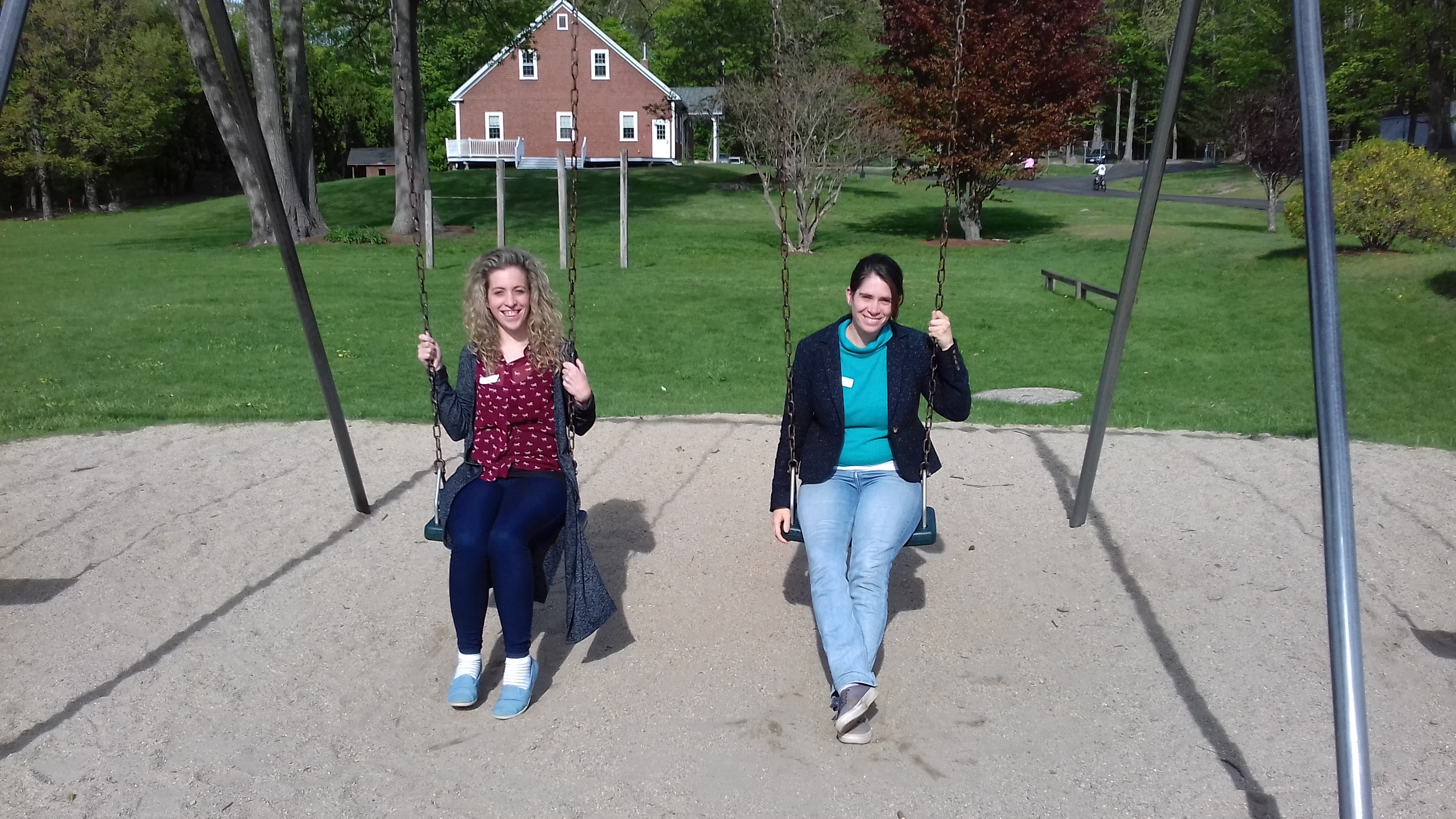As we walked down the driveway to the main building, slightly jet-lagged after the flight from the UK, I thought I knew what to expect. After all, we had spent a year immersing ourselves in Sudbury literature with the aim of opening a school in Kent based on the Sudbury model. Coming into the school, however, I found that no amount of theory can replace directly experiencing the atmosphere of a place. It was familiar and comfortable, and yet unexpected and challenging, all at the same time.
On the steps to the porch we were greeted casually by a little girl of about five who looked us right in the eye and told us where to find the office. Walking about the campus we were struck by the beauty of the site itself. We found students in groups, small and large, in all kinds of places hanging out and talking together. In other rooms there were students sitting alone with a computer or book. Everyone seemed happy and engaged but it wasn’t always clear what they were engaged with. It was very peaceful with a constant hum of activity. Yet these words don’t convey the unique atmosphere, we couldn’t quite put our finger on what it was. Over the course of the week it felt like the school gradually revealed itself to us, as if we were peeling away one layer after another.

With a traditional school it’s very clear that it’s a place where learning is meant to take place, everything is designed with that in mind. But it’s all very external – for show. You can’t see what learning is taking place inside someone’s head from a timetable, course book or even their grade but these things are there any way to persuade us that that we can. At Sudbury Valley School there is no one making a show of it, learning is internal and personal and it is accepted as such. This makes it hard at a glance to recognise that it is taking place.
I saw groups of students sat around a table at various times deep in conversation covering all kinds of topics from what someone did the day before to the mating habits of Orca whales to philosophical questions raised by a book they had read to pop music. They challenged each other all time, throwing out a different perspective for their friends to consider. I also noticed they were mostly also busy with something else at the same time; fiddling with chords on a guitar, writing on a laptop, making a mother’s day gift. Younger children were playing outside or busying themselves in the art room, dashing back and forth with excitement and urgency or collaborating on a video game.
 Organised activity takes place too, of course. Children just as much as anyone else like to make plans and organise themselves in groups. The big event of the week was the music corporation show. It was an impressive feat with a varied line-up of all ages. Solo acts, duets and full bands, original pieces, covers and light entertainment. What struck me the most about the show however, was not the talent on stage (though there was plenty of that) but how genuine the performances were. A school show is usually the achievement of the staff who conceive of the idea and who direct the students’ performance. That’s not to say those students wouldn’t enjoy the experience of being part of a show – but this was so much more. The whole experience belonged solely to them. After all their hard work and preparation, they stood on stage as their authentic selves, confident that the audience were there in their support rather than as judges. The result was both heart breakingly beautiful and joyful – more than one performance had me wiping my eyes.
Organised activity takes place too, of course. Children just as much as anyone else like to make plans and organise themselves in groups. The big event of the week was the music corporation show. It was an impressive feat with a varied line-up of all ages. Solo acts, duets and full bands, original pieces, covers and light entertainment. What struck me the most about the show however, was not the talent on stage (though there was plenty of that) but how genuine the performances were. A school show is usually the achievement of the staff who conceive of the idea and who direct the students’ performance. That’s not to say those students wouldn’t enjoy the experience of being part of a show – but this was so much more. The whole experience belonged solely to them. After all their hard work and preparation, they stood on stage as their authentic selves, confident that the audience were there in their support rather than as judges. The result was both heart breakingly beautiful and joyful – more than one performance had me wiping my eyes.
Before we came, we had been curious to witness the Judicial Committee or JC. We had read about how fair and effective a judicial system based on peer review could be. But the language used can sometimes sound cold and punitive. I wondered about the human element, how did it feel as a five year-old to be written up?
 Whilst the process of the JC is more formal than any of the other justice systems I’d observed in other schools the atmosphere was considerably more informal. What I’d not been able to see until now is how cheerful and good natured the banter around the committee table is, how sensitively each student is treated. The very clear, careful and respectful way the broken law is explained to each student. And yet in all this good nature is the gravity of the moment lost? Absolutely not, the smallest of children took their sentences very seriously, exercising huge efforts of self-discipline to carry them out over the following days. The time and dedication the JC gave in seeking out the truth in each case, no matter how small, was really impressive.
Whilst the process of the JC is more formal than any of the other justice systems I’d observed in other schools the atmosphere was considerably more informal. What I’d not been able to see until now is how cheerful and good natured the banter around the committee table is, how sensitively each student is treated. The very clear, careful and respectful way the broken law is explained to each student. And yet in all this good nature is the gravity of the moment lost? Absolutely not, the smallest of children took their sentences very seriously, exercising huge efforts of self-discipline to carry them out over the following days. The time and dedication the JC gave in seeking out the truth in each case, no matter how small, was really impressive.
They say the JC is the heart of the school, but what does that mean? I didn’t understand it before; I think I have a clearer idea now. The JC is where you find out that the equal status given to each school meeting member is real. That each person no matter how small is trusted to live within the boundaries set by the community and is held to account in the same way when they slip up. The students know this, they feel it, that’s why they like to come and observe JC – just to check on it. Why is it not distressing to be brought to the JC? Because the students appreciate being treated like a capable, equal member of the community, and that is empowering rather than humiliating. It’s how they know they are respected and they wouldn’t have it any other way.
As we peeled the layers back over our week of observing and learning; the concept we kept coming back to was respect. There is a very particular kind of freedom that comes from knowing that your individual rights are absolutely respected, as only then are you truly free to be yourself. Everything about Sudbury Valley School speaks of respect, the way the grounds are maintained, the way the youngest of students will look you in the eye, the way a complaint is handled in the JC, the way the staff are very careful to be available to students without crowding their independence.
I am left reflecting on something that Hanna said to me; that you can visit a Sudbury school anywhere in the world and the language and culture will be different, but the body language is the same. As we left Framingham we took with us a strong sense that Sudbury Valley students have a confidence that comes from knowing themselves and knowing that they are respected. And that’s very special indeed.

